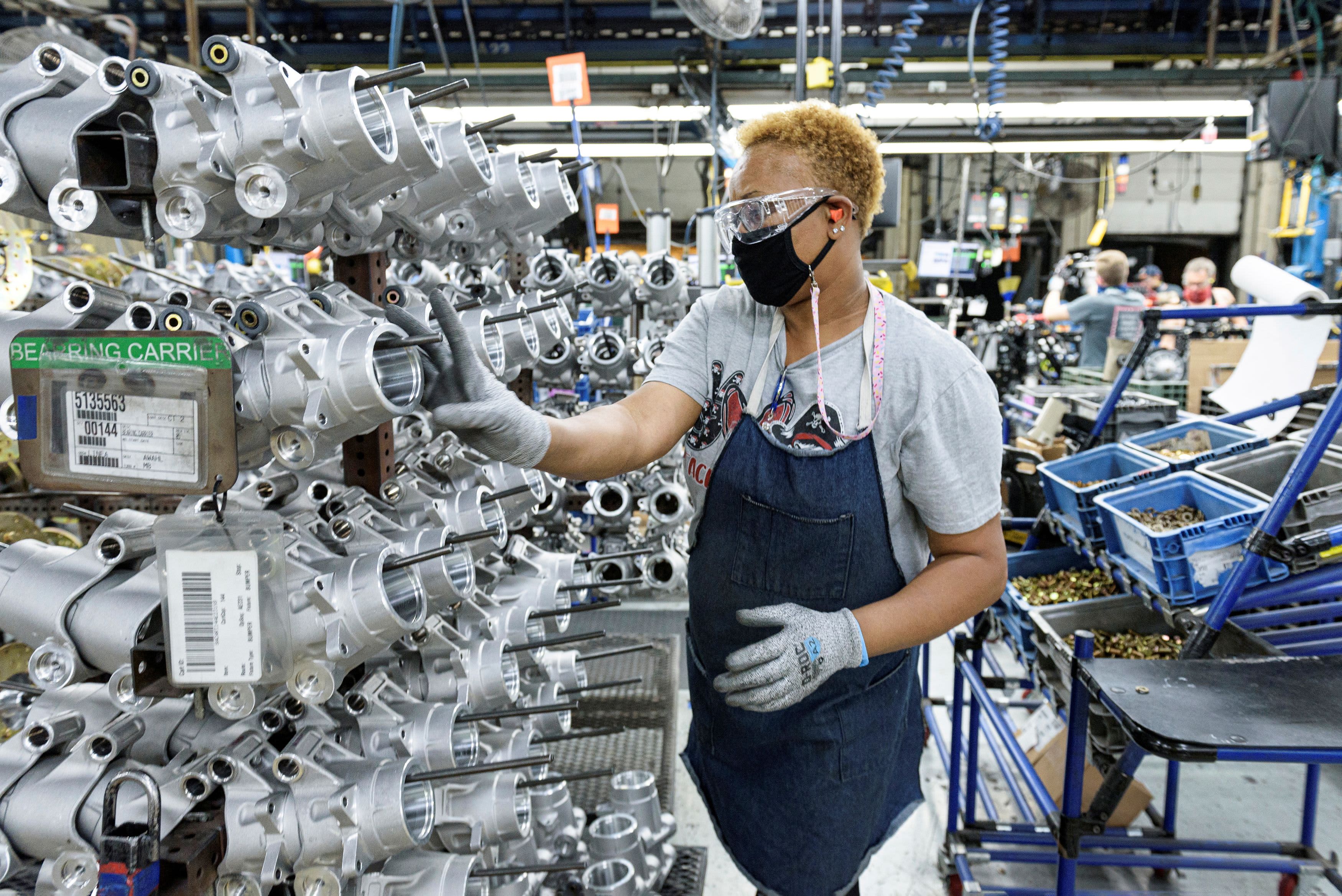The U.S. economy rose at a disappointing rate in the second quarter, the Commerce Department reported Thursday in a sign that the U.S. has escaped the shackles of the Covid-19 pandemic but still has more work to do.
Gross domestic product, a measure of all goods and services produced during the April-to-June period, accelerated 6.5% on an annualized basis. That was slightly better than the 6.3% gain in the first quarter, which was revised down narrowly.
While that would have been strong prior to the pandemic, the gain was considerably less than the 8.4% Dow Jones estimate.
Gross private domestic investment fell 3.5% as declines in private inventory and residential investment held back gains. Rising imports and a 5% decline in the rate of federal government spending, despite the ballooning budget deficit, also were factors, the Bureau of Economic Analysis report said.
The overall increase came thanks to increasing personal expenditures, which rose 11.8% as consumers accounted for 69% of all activity. Nonresidential fixed investment, exports and state and local government spending also helped boost output.
The personal savings rate dropped sharply, tumbling to $1.97 trillion from $4.1 trillion in the previous period.
The headline gain was a yardstick for how far the economy has come from the shutdowns imposed during the early days of the pandemic, when governments across the country halted large swaths of economic activity to combat Covid.
At its nadir, the economy collapsed 31.4% in the second quarter of 2020; it bounced back 33.4% in the subsequent three-month period and has continued to push toward normal since.
In the years prior to the pandemic, the Q2 gain would have been the strongest since the third quarter of 2003.
Though output has remained below its pre-pandemic level, the National Bureau of Economic Research pronounced the recession that began in February 2020 to have ended just two months later, the shortest on record.
However, the second quarter is likely to be the high point of the pandemic recovery.
“The good news is that the economy has now surpassed its pre-pandemic level,” wrote Paul Ashworth, chief U.S. economist at Capital Economics. “But with the impact from the fiscal stimulus waning, surging prices weakening purchasing power, the delta variant running amok in the south and the saving rate lower than we thought, we expect GDP growth to slow to 3.5% annualized in the second half of this year.”
Still, areas of the economy remain underwater as the labor market in particular has struggled to get back to normal.
In a separate report Thursday, the Labor Department said 400,000 people filed initial claims for unemployment benefits for the week ended July 24. That level is nearly double the pre-pandemic norm and was above the 380,000 Dow Jones estimate. However, it was a decrease from the previous week’s 424,000.
Continuing claims edged higher to 3.27 million, according to data that runs a week behind the headline number. The total of those receiving benefits rose by nearly 600,000 to 13.16 million, according to data through July 10.
Correction: The annualized gain in GDP was misstated in one summary. It was 6.5%. Also, the personal savings rate dropped to $1.97 trillion.
Become a smarter investor with CNBC Pro.
Get stock picks, analyst calls, exclusive interviews and access to CNBC TV.
Sign up to start a free trial today.

